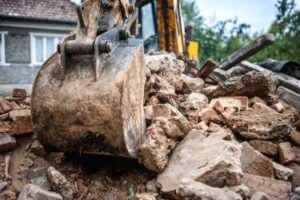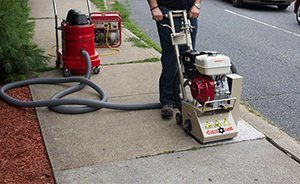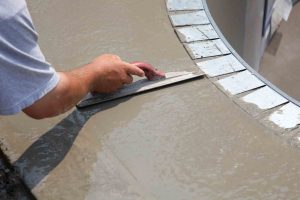A concrete saw, also known as a cut-off saw, is a power tool similar to a chainsaw. The difference is that concrete saws are built stronger and more durable to cut tough surfaces, including, but not limited to concrete, tiles, bricks, and masonry. Concrete saws often use diamond saw blades and abrasive wheels to make precise cuts on solid materials.
There are many types of concrete saws and choosing one type depends on the location of the job, operator, and task at hand. The two most popular types of concrete saws are electric saw and gas-powered saw. We’ll give you a rundown of the advantages and disadvantages of the two:
Electric Saw
Pros:
- Lightweight. They are lighter because there is no additional chamber for fuel. As a result, the operator would be less likely to get fatigued.
- Easier to store. It can be stored anywhere without worrying about fire hazards.
- Less noisy. They are suitable for use in noise-sensitive areas such as schools and churches.
- Simpler to use than other types of saw. They can start faster with just a push of a few buttons.
- Easier to maintain. They require less ongoing maintenance than gas-powered saws.
- Best for indoor use. They don’t emit unhealthy fumes, so they are recommended for cutting concrete in enclosed spaces. It can fit in small areas where larger saws can’t.
- Corded and cordless varieties. Cordless saws are battery-operated. Depending on the nature of the task, there is the option to run the saw with electricity when the batteries are drained.
- Environment-friendly. They don’t emit gas that harms the user and the environment.
Cons:
- Less powerful. Electric saws are considerably lighter than gas saws and are not built for heavy duty tasks, thus a simple job may take longer to complete.
- Requires a lot of power to operate. Electric saws for slab cutting may require a 480-volt generator to operate a 42-inch blade.
- Wet cutting is not recommended. Because it’s electric-powered, You can’t use water to hold down the dust. The dust can go all over the place, so it’s also not good for basement work, and creates a higher amount of silica dust.
- Not as portable as gas saws. A corded saw will restrict your work area. Using portable generators and extension cords will add up to its cost. Their cords might be easily spliced or misplaced.
- Can be a potential hazard. The user may trip over the cord while using the tool.
Gas-powered Saw
Pros:
- Mobility. One can bring the saw almost everywhere because one doesn’t need to worry about cords and generators.
- Familiarity. Most contractors are more familiar and at ease in using a gas-powered saw.
- More powerful than electric saw. Gas saws are more capable of handling heavy duty tasks.
- Robust and solid construction. They are build to last long and tolerate rough handling.
- Can cut wet and dry. Wet cutting is recommended to prevent dust and gas-powered saws are best for such task because they don’t operate using electrical connections. They often come with a vacuum and dust containment system, so dry cutting will not be a problem. It’s still recommended to wear safety gear to prevent dust inhalation.
Cons:
- Harder to maintain. Regular maintenance, such as cleaning filters and changing spark plugs is recommended to make sure the saw performs at its best.
- Not recommended for enclosed spaces without enough ventilation. They produce plenty of fumes that can be unhealthy or lethal especially if the user has an existing lung condition.
- Takes time to start. Most gas saws rev up after being started and don’t fire up as quickly as electric saws. It can be annoying if the user is working on a task that requires turning the saw on and off frequently. Different machines may have different startup routines
- Can be very noisy. The noise level of gas-powered saws can reach unhealthy decibel levels. Definitely not good for the user’s long term hearing.
- Heavier than their electric counterparts. Because of its size and built, a gas saw tends to be heavier and more cumbersome to handle. Using this saw, the operator will likely fatigue more quickly.



